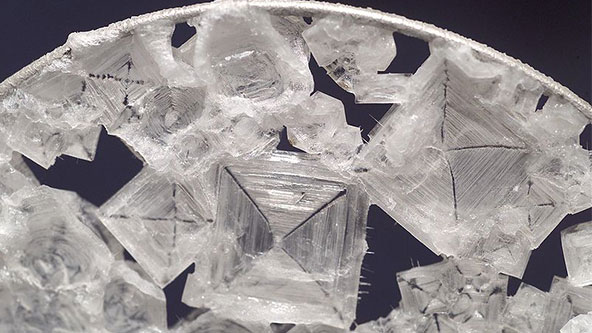Safety with Salt – Sodium Chloride Safety Information
Posted on April 10, 2015 | in Health

Sodium Chloride Safety Information & Tips
Sodium chloride is the chemical name given to salt or table salt. It’s a white crystalline mineral substance that’s used as a seasoning in many foods, as well as in many workplace situations for a wide variety of purposes.
Sodium chloride solutions are used medically to treat or prevent sodium loss caused by dehydration, excessive sweating, or other issues. These solutions are used in intravenous (IV) infusions and catheter flush injections. In the form of saline, sodium chloride is used to clean objects like contact lenses.
Precautions When Working with Sodium Chloride
While sodium chloride isn’t currently considered a health hazard, the following precautions should be taken when working with the chemical to ensure you’re steering clear of any potential dangers:
- Work area should have sufficient exhaust ventilation. Regularly vacuum dust to minimize the potential of air-borne exposure.
- Avoid eye contact and wear eye protection if/when eye contact is likely to occur.
- Avoid skin contact and wear protective clothing and gloves.
Managing Exposure to Sodium Chloride
Although normal handling of sodium chloride is not known to have any significant effects or health hazards, the following good laboratory practices should be followed if exposure does occur:
1) Eye Contact
Remove contact lenses, if necessary. Rinse immediately with plenty of water for at least five minutes. Seek medical attention if irritation occurs and persists.
2) Skin Contact
Remove contaminated clothing and wash affected area with plenty of soap and water. Seek medical attention if the skin becomes irritated or a rash develops.
3) Inhalation
Remove the person from exposure and bring into fresh air. Seek medical attention if the exposed individual has any difficulty breathing.
4) Ingestion
Do not induce vomiting. If person is conscious, rinse mouth with plenty of water and give several glasses of water to drink. Seek medical attention if adverse symptoms occur.
Safely Handling Sodium Chloride Spills
In the event of a sodium chloride spill, the following steps should be taken:
- Vacuum or wet-sweep the area. Avoid dry sweeping or other methods that will raise dust.
- Place into a closable container and label for disposal.
- Clean the area with water and detergent.
Properly Storing Sodium Chloride
Sodium chloride should be stored in a cool, dry, well-ventilated area and kept in a securely closed container. Be sure to keep away this chemical away from excessive heat.
For more information on sodium chloride and other chemicals, search our database of MSDS information here.